
Manufacturer's Specifications:
Speeds: 33 1/3 and 45 rpm, electronic switching and fine adjust.
Motor Type: Brushless d.c. servo.
Drive Type: Belt.
Platter: 11.2 lb., cast alloy with damping.
Suspension: 20-lb. subassembly, 4-point system.
Rumble: -60 dB unwtd.
Wow and Flutter: 0.04% wtd. rms.
Suspension Frequency: 2.55 Hz.
Weight: 44 lb. (20 kg).
Dimensions: 7 1/2 in. (19.05 cm) H (to top of dust cover) x 20 1/4 in. (51.4 cm) W x 16 1/2 in. (41.9 cm) D.
Price: $750.00.
Company Address: P.O. Box 7075, Berkeley, Cal. 94707.
SOTA, located in Oakland, Cal., is the only company in the U.S.A. presently making turntables. This is an amazing fact since, in past years, some of the finest turntables in the world were made in this country. All of the turntables sold here in the past few years have been imported, even those of audiophile quality. Rather than merely copying some previously successful turntable, Rod Herman, a mechanical design engineer and British expatriate, and David Fletcher, a physicist formerly with the University of California, have taken a fresh look at the functions a turntable is meant to perform and come up with a design which has many unique features. They have called their turntable the Sapphire, after the material used for the precision-ground thrust plate upon which the main bearing turns.
SOTA stands for "State of the Art," and the Sapphire turntable is designed and manufactured with state-of-the art goals in mind. SOTA also makes the lower cost GEM turntables for Sumiko of Berkeley, Cal. The GEM-707 at $725 and the GEM-747 at $800 have many of the same design features as the SOTA Sapphire.
The objective technical measurements and subjective listening evaluations of the Sapphire turntable were made using the Sumiko MDC-800 tonearm and the Talisman S moving-coil phono cartridge. Comparisons between this combination and my present reference system were made by a listening panel. My practice is to make the technical measurements prior to the listening tests to insure that the turntable, tonearm and cartridge are functioning at their best and that no hidden defects, which could have been corrected, can invalidate these results. During the playing of each selection, members of the listening panel are asked to make notes, which will be discussed and compared later.
There is no talking during the playing of selections, and the panel members are asked not to make any outward reactions which might be distracting.
After the listening tests, I try to correlate the comments of the listening panel with the technical measurements. During the technical evaluations, many measurements are made which never appear in the published report. They are necessary, however, to assure that nothing has been over-looked which might affect performance and to provide in sights which help in correlating the subjective judgments of the panel members. In this report, the comments made by members of the listening panel and the technical data are presented together and correlated where possible.
The "turntable that Newton would have built," as SOTA describes the Sapphire, incorporates many ingenious features. The main bearing, instead of being at the bottom of a bearing well as with other turntables, is up at the center of gravity in the middle of the turntable platter. Figure 1 shows the bearing container (it would be silly to call it a well), which is an integral part of the platter and rotates with it. Also shown in Fig. 1 are the two matched, sintered, bronze bearing sleeves; the sapphire thrust plate, and the thrust ball bearing attached to the static (non-moving), 0.55-inch diameter thrust shaft. This design prevents any tendency to wobble, because both the 11-pound mass of the aluminum platter and the belt which drives the platter at the rim are directly in line with the main bearing. The drawing also shows that most of the platter's mass is near the rim, providing a flywheel effect which improves speed stability.
The platter is not removable and is shipped from the factory with transit screws which lift it to release the sapphire thrust plate from contact with the thrust shaft's ball-bearing tip.
Note in the drawing that the platter pad, which is permanently attached, extends higher than the center and edge of the platter and allows the record to fit snugly so that unwanted mechanical energy may be dissipated. SOTA warns against the use of heavy record clamps and recommends only light, friction-lock clamps such as the Sumiko BA-20 stabilizer clamp I used.
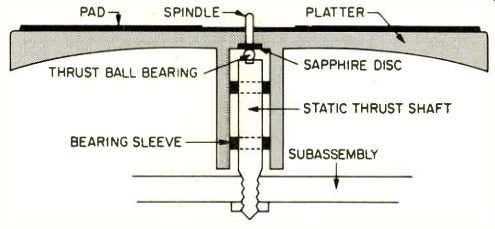
Fig. 1-Side-view drawing showing details of bearing and thrust disc. Note that
bearing is at the platter's center of gravity.
The subchassis, upon which the turntable bearing and tonearm are mounted, hangs by four springs from the turn table base plate. Winding the springs in clockwise and counterclockwise pairs, and mounting them diagonally from each other, effectively cancels the tendency for rotational motion when the springs are flexed. The springs are matched by the factory to resonate with the mass of the turntable at 2.5 Hz. Since the Sapphire is shipped without an arm, the mass of the tonearm is unknown but is taken into consideration: A 2.5-pound bag of shot is supplied, and the turntable is set up and balanced with this in place on the tonearm mounting board. After the tonearm is mounted, some of the shot is poured into a well near the tonearm until the total mass of the tonearm and the shot equals 2.5 pounds. When this is done, the turntable is rebalanced. By this technique, arms of up to 2.5 pounds can be used with the Sapphire while still maintaining the 2.5-Hz resonance without any adjustment of the springs. The base, from which the subchassis is suspended, has over twice the mass of the subchassis and platter. I think this is very sensible since suspending a heavy subchassis from something light and flimsy, which itself is susceptible to environmental vibration, is no solution to, and indeed often only compounds, the isolation problem. The SOTA Sapphire turntable provides speeds of 33 1/3 and 45 rpm with pitch controls for each speed. The standard base is ash finished in oak, while an optional base of koa wood is $100 more.
Measurements
MEASURED DATA
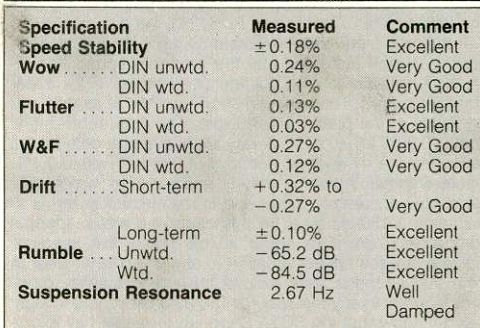
Some of the data in this report appear different from those in my previous reports because a digital plotter was used instead of the usual photo of the display screen. The digital plotter is connected via the IEEE-488 buss to a Nicolet 660A-2D dual channel fast Fourier transform analyzer (FFT), a Nicolet Explorer III dual-channel digital-storage oscilloscope, and a computer controller. After each test, the data, which have been analyzed and stored by the appropriate instrument, are transferred to the plotter. I hope this data format provides greater clarity than the photos used previously.
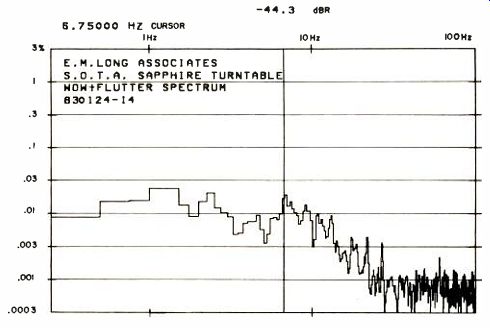
Fig. 2--Computer plot of wow and flutter spectrum, from 0 to 100 Hz. Frequency
components are evenly distributed and very low in level, both excellent.
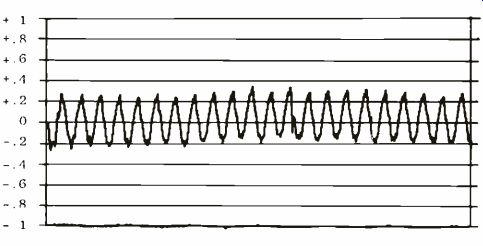
Fig. 3--Speed drift over a 41-S period. The variation at 5.6 Hz is related
to one revolution at 33 1/3 rpm. The drift varies between +0.32% and -0.27%.
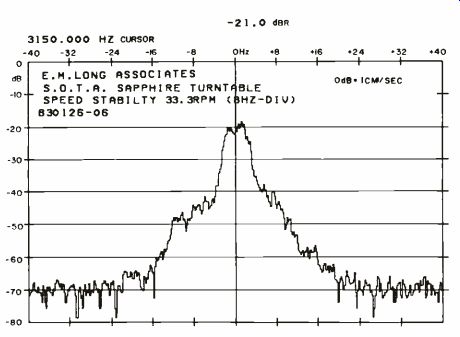
Fig. 4--Speed stability referenced to 3,150-Hz tone on B & K 2010 test
record. The variation is very tight compared to most turntables.
Speed accuracy and stability are very important aspects of turntable performance. While the simple wow and flutter numbers shown in the "Measured Data" table are quite good, the data shown in Fig. 2 are even more revealing of performance. This shows that the wow and flutter spectrum is well distributed, with no prominent component which would tend to add coloration to the sound. The listening panel made favorable comments about the clarity of the reproduction from the SOTA turntable, and lack of flutter seems to be a major reason for this impression.
Figure 3 is a 41-second recording of the variation in the 3,150-Hz wow and flutter test tone of the B & K 2010 test record. The output is taken from the drift output of the wow and flutter meter. At precisely 3,150 Hz, the d.c. output is 0 V. If the tone increases in frequency, the d.c. voltage goes positive, which indicates that the turntable speed has in creased; the d.c. output voltage goes negative for a de crease in speed. The variation shown occurs at exactly one revolution of the platter at 33 1/3 rpm. The short-term drift is from +0.32% to -0.27%. A very slight average drift can be seen over the 41-second period, but it is well within 0.1%.
Figure 4 shows the same data in another form, which indicates how accurately the speed is maintained in terms of the same 3,150-Hz tone. In this case, the major spectral components, down to about 20 dB below the average, indicate that the speed variation is about ± 0.18%. Bear in mind that all these tests include the speed stability problems inherent in any test record. The data presented in Figs. 3 and 4 show that the SOTA Sapphire turntable has excellent speed accuracy and stability, and the comments made by the listening panel with respect to the clarity and definition of the sound reproduction attest to this. In fact, comparisons between the SOTA and the reference turntable, in this regard, caused the panel much difficulty; the conclusion was that comments about the performance of each turntable, when playing even difficult program material such as piano, left no clear winner between the two.
Figure 5 shows the rumble spectrum of the SOTA Sapphire turntable. In this case, 0 dB is referenced to 10 cm/S, which is the standard level for rumble measurements. The main component of rumble at 10 Hz is due to the natural resonance of the tonearm mass reacting with compliance of the cartridge. The level of this component is 36.8 dB below the 10 cm/S reference and is very good. The rumble spectrum is very smooth, with no components which would tend to color the background noise. The component at about 23 Hz is an artifact of the B & K 2010 test record. The ''Measured Data" table shows the unweighted rumble is-65.2 dB, which is better than the 60 dB minimum claimed, while the weighted rumble is-84.5 dB. When playing copies of identical records simultaneously on both the SOTA and the reference turntable, no difference in level or coloration of the background noise could be distinguished between the two.
In the past few years, a great deal of attention has been directed to the problem of energy control and dissipation in phono sound reproduction. The problem can be divided into at least three separate areas: Energy internal to the disc caused by the playing of the record by the phono stylus, external mechanical vibrations transmitted through the suspension, and acoustical energy transmitted through the air. These three forms of energy are picked up by the stylus and added to the desired signal. The quality of the sound reproduction is improved if they are reduced.
Figure 6 shows the average level of spectral components caused by a series of mechanical impulses to the edge of a stationary record while the phono stylus is resting in a groove. These mechanical impulses cause energy to be released in the record. The mechanical energy versus time is displayed in Fig. 7. The higher frequency energy lasts for only about 30 mS, but the low-frequency energy at about 60 Hz lasts for over 200 mS. This indicates that the SOTA turntable mat (which, by the way, is nonremovable) is quite effective in damping high-frequency energy but is less effective at lower frequencies. The greatest energy level is at 62.5 Hz and 162.5 Hz but is at least 30.7 dB down from the 0 dB = 1 cm/S reference level. There is, however, a broad band of energy from about 880 to 1,350 Hz-which could be the reason that all of the panel members commented that the sound reproduction, particularly brass and strings, was brighter and sharper from the SOTA than from the reference turntable.
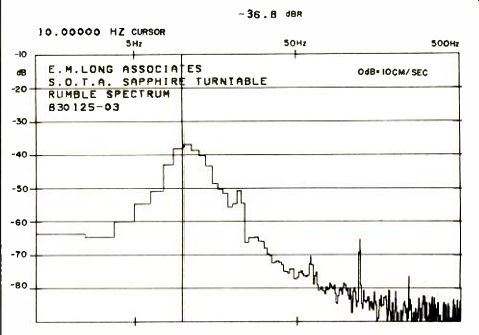
Fig. 5--Rumble spectrum, tonearm/cartridge Main output is from resonance at
10 Hz.
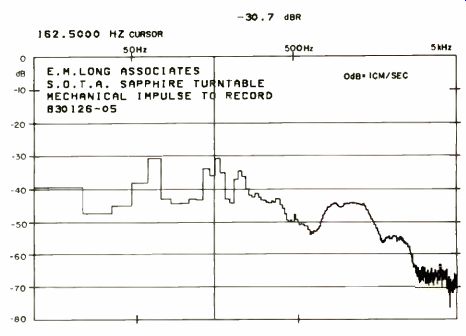
Fig. 6--Spectrum (to 5 kHz) of vibrations caused by mechanical shock to edge
of record, with stylus resting in groove. The damping of internal energy is
very good, with the major components at 62.5 and 162.5 Hz.
One of the requirements for a good turntable is that it be well isolated from external mechanical forces which could interfere with sound reproduction. To be state of the art, it is not enough that a turntable be isolated from forces which could cause catastrophic interference effects; its suspension system must provide a high degree of isolation from any intrusion of outside mechanical influences into the reproduced sound. The SOTA Sapphire provides this type of isolation better than any turntable I have seen or tested so far.
Figures 8 and 9 display the spectrum and the output versus time from an external mechanical shock applied to the extremely massive test stand upon which the SOTA turntable was mounted during the laboratory tests. The spectrum information of Fig. 8 shows that the level of any individual frequency component is greater than 30 dB below the 1 cm/S reference level. The output versus time response of Fig. 9 indicates that the higher frequency components are greatly diminished within the first 200 mS and that the resonant frequency of the turntable mechanical suspension is 2.67 Hz, extremely close to the 2.55-Hz specified.
Figure 10 shows the spectrum due to the presence of a sound pressure level of 100 dB at the surface of the turntable platter. The stylus is once again stationary in a groove near the middle of the record. The major output is near the suspension resonance, but it is 26.3 dB below the 1 cm/S reference, which is very low. The next highest output is, as might be expected, at the tonearm/cartridge resonance of 10 Hz. There is output of significance at about 60 to 65 Hz, but even this is at-34 dB.
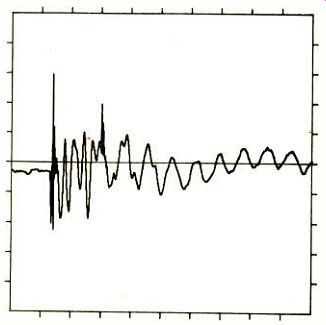
Fig. 7--Output vs. time response of the impulse of Fig. 6. The spectrum of
Fig. 6 was derived from this using a fast fourier transform analyzer.
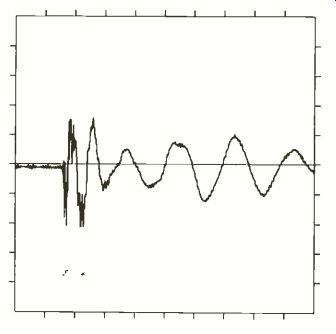
Fig. 9-Output vs. time response of the impulse of Fig. 8. The low-frequency
oscillation is at 2.67 Hz and is due to the mass of the turntable and the compliance
of the springs. The period of measurement is 2.05 S.
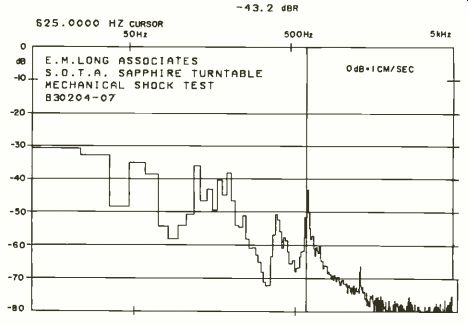
Fig. 8--Spectrum (to 5 kHz) of vibrations caused by mechanical shock to massive
platform on which the turntable rested. The turntable exhibits excellent isolation
from external shock.

Fig. 10--Spectrum (to 100 Hz) of vibrations from a 100 dB acoustic field at
the cartridge position. Cartridge is resting in a groove near the middle of
a record. Isolation from the acoustic field is excellent.
Use and Listening Tests
The overall impression of the listening panel was corroborated by the measurements very well. The comments were mostly directed toward a very slight brightness or sharpness in the sound when compared with the reference turntable. The data in Fig.8, which shows the effect of the energy stored in the disc itself, reveal that the energy between 880 and 1,350 Hz is not dissipated very quickly (even though it is at a low level) and therefore does tend to color the sound and add a bit of brightness. This brightness was only notice able when recordings of strings or brass were played simultaneously on the SOTA and the reference turntables, and the two discs are directly compared by switching between them. In fact, the listening panel had great difficulty in discerning any difference between the turntables on most program material. The deep bass was solid, the upper bass was well defined, the quality of male voice was very good, and the stability and clarity of the stereo image were good on both. The point which put the SOTA Sapphire turntable ahead of the reference turntable was its stability and isolation from environmentally induced mechanical or acoustical energy which could affect the sound. I feel that the SOTA Sapphire turntable is excellent at any price. At its present, reasonable price, it is an exceptional value.
-Edward M. Long
(Audio magazine, Jun. 1983)
Also see:
SOTA Star Sapphire Turntable (Equip. Profile, Jun. 1986)
SOTA Cosmos Turntable / SME 309 Arm & Signet OC9 Cartridge (Equip. Profile, Sept. 1990)
= = = =